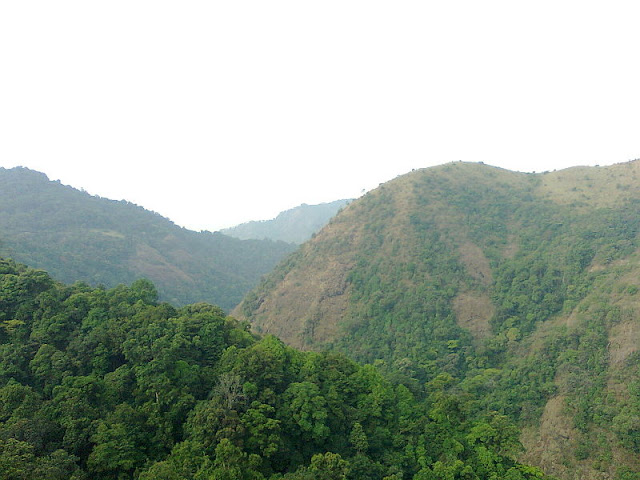Silent Valley National Park - Flora
The flora of the valley include about a 1000 species of
flowering plants, 108 species of orchids, 100 ferns and fern allies, 200 liverworts, 75 lichens and about 200 algae. A majority of these plants are endemic to the Western
Ghats.
Flowering plants
Angiosperm flora currently identified here includes 966
species belonging to 134 families and 599 genera. There are
701 Dicotyledons distributed among 113 families and 420 genera. There are
265 Monocotyledons here distributed among 21 families and 139 genera.
Families best represented are the Orchids with 108 species including the rare, endemic and
highly endangered orchids Ipsea malabarica, Bulbophyllum Silent valliensis and Eria tiagii, Grasses, Legumes , Rubiaceae and Asters.
There are many rare, endemic and economically valuable
species, such as cardamom Ellettaria cardamomum, black
pepper Piper nigrum, yams Dioscorea
spp., beans Phaseolus sp., a
pest-resistant strain of rice Oryza Pittambi, and 110 plant species of
importance in Ayurvedic medicine. Seven new plant species have been
recorded from Silent Valley, including in 1996, Impatiens sivarajanii, a new species of Balsaminaceae.
Trees
Occurrence of lion-tailed macaque is dependent on the
flowering of Cullenia exarillata in the forest.
Six distinct tree associations have been described
in the valley. Three are restricted to the southern sector:
·
Cullenia exarillata and Palaquium ellipticum
·
Palaquium
ellipticum & Mesua ferrea (Indian rose chestnut)
·
Mesua
ferrea and Calophyllum elatum
The remainders are confined to the central and northern
parts of the park:
·
Palaquium
ellipticum and Poeciloneuron indicum
·
Calophyllum
elatum and Ochlandra species
·
Poeciloneuron indicum and Ochlandra species
A study of natural regeneration of 12 important tree
species of Silent Valley tropical rain forests showed good natural regeneration
of all 12 species. The species studied were Palaquium ellipticum, Cullenia
exarillata, Poeciloneuron indicum, Myristica dactyloides, Elaeocarpus glandulosus, Litsea floribunda, Mesua nagassarium, Cinnamomummalabatrum, Agrostistachys meeboldii, Calophyllum polyanthum, Garcinia morella and Actinodaphne campanulata.
Recent selective felling of three trees per acre, has
led to the cutting of 48,000 m3 of timber from about 20 km2. There is
a huge hollow kattualying tree here which can fit 12 people inside.
Genetic Resources
Throughout human history about 10% of the genetic stock
found in the wild has been bred into palatable and higher yielding cereals, fruits
and vegetables. Future security depends on the preservation of the
remaining 90% of the stock through protection of high biodiversity habitats
like Silent valley.
The National Bureau of Plant Genetic Resources of ICAR
(India), Plant Exploration and Collection Division has identified Silent
Valley as high in bio-diversity and an important Gene
Pool resource for Recombinant
DNA innovations. An important example of use of
wild germ plasm is gene selection from the wild varieties of
rice Oryza nivara (Central India) and Oryza
Pittambi found in Silent Valley for the traits of broad spectrum disease
resistance in high yielding hybrid rice varieties including IR-36, which are responsible
for much of the Green
Revolution throughout Asia.
Also, genetic evaluation of plant growth promoting Rhizobacteria obtained from Silent Valley indicated that strain,
IISR 331, could increase the growth of black
pepper cuttings by 228% and
showed 82.7% inhibition of the common plant wilting disease Phytopthora capsici in laboratory tests (in
vitro).








































































